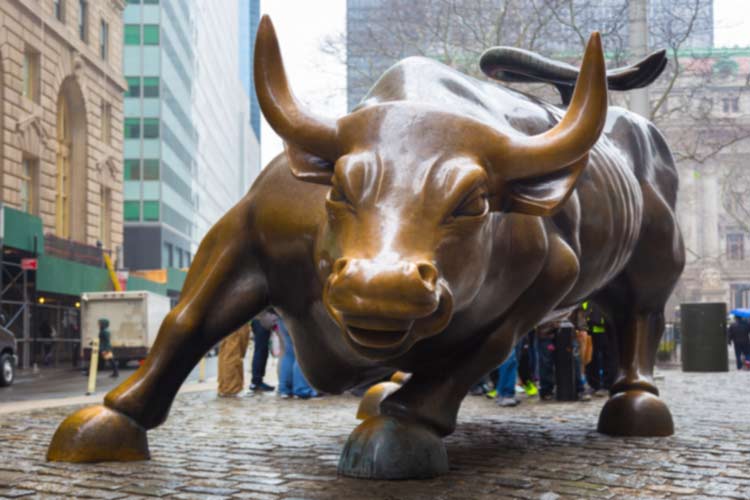
The best premium buying opportunities for options traders can be found during low-volatility uptrends
The following is a reprint of the market commentary from the May 2017 edition of The Option Advisor, published on April 27. For more information, or to subscribe to The Option Advisor -- featuring 10 new option trades each month -- visit our online store.
In the course of composing a recent Chart of the Week commentary, it occurred to me that I've actually never seen a better juxtaposition of historical volatility (HV) and price action than on the chart of the VanEck Vectors Semiconductor ETF (SMH) below. And in particular, how over strongly trending periods of persistent upside price action, HV can -- and generally does -- decline sharply.
Note especially how HV for SMH engaged in a final spike higher just as SMH was bottoming in January 2016, and how HV was then cut by more than two-thirds over the ensuing period -- as SMH almost doubled.

Why do I take pains to point out the inverse correlation between SMH's positive price trend and its collapsing historical volatility? Simply because there are so many traders who have been taken in by the fallacy that high volatility is necessary for stocks to register the kinds of big moves that make options trading profitable, and low volatility is a recipe for poor performance by option premium buyers. As it turns out -- and as exemplified by the SMH chart above -- this line of thinking is almost exactly wrong when it comes to call options.
To gauge the true correlation between HV and options trading returns, our Senior Quantitative Analyst Rocky White looked back at two years' worth of options data on the SPDR S&P 500 ETF (SPY). Assuming a hypothetical at-the-money call option was purchased on SPY each day over this two-year stretch produces a sample of 500 different returns. After holding each option for 21 days, it was closed at intrinsic value. These results were then sorted into equally populated "brackets" based on the HV range for SPY over the option's 21-day holding period, going from the lowest (4.5%-7.6%) to the highest (15.8%-32.6%).
If you buy into the theory that "the higher the volatility, the higher the options profits," you might assume that the best returns would occur during the periods of higher HV -- but that's not the case at all with call options. During the lowest of SPY's 21-day HV ranges, the at-the-money call averaged a 24.4% gain, and 25.6% of those call positions doubled in value. During the periods of highest SPY HV, the calls performed terribly -- the average return was a 41.6% loss, with only 28% positive.

So when you're looking to play options on the bullish side, low historical volatility should generally be considered a positive factor -- not a deterrent. That's because the low HV typically coincides with a longer-term uptrend, and the best way to capitalize on that is by purchasing longer-dated options premium.
This theory recently played itself out in the form of a winning trade in our Weekend Trader Alert options recommendation service. We purchased McDonald's (MCD) June 120 calls back on Feb. 13, when MCD's 20-day HV was 8.02.
Now, keep in mind that this is HV for an equity, not an index (or index proxy, as with SPY), and stocks generally carry additional volatility due to company-specific risks. So in a world where a CBOE Volatility Index (VIX) reading of 10-15 is considered "low," an individual stock with an HV reading around 8 might be perceived as far too sluggish to generate outsized option profits -- and particularly for a trade with only four months until expiration.
In defiance of that conventional wisdom, the MCD call had doubled by April 24, almost two months ahead of its June expiration date, and just about two months after entering the trade. And this was despite McDonald's HV retreating further during the life of the trade, falling as low as 3.78 on April 3 and arriving at 6.4 on the day the option was closed at a double.
That said, repeating the same study above with SPY puts in place of calls yields very different results. In this scenario, the highest-volatility bracket produced the only instance of positive average put returns (and the highest proportion of "doubles" by a wide margin). Given the general tendency for volatility to spike when markets tumble, this isn't exactly a shocking result.

On balance, this analysis bottom-lines to the fact that volatility alone doesn't create options winners (and especially short-term volatility that's ultimately directionless over time). So it's not necessarily "stocks that have realized high volatility" that call buyers should gravitate toward for prime premium-buying opportunities, but instead, stocks that are experiencing a low-volatility directional price trend. As our own trading results have shown, targeting these types of scenarios can generate impressive option profits even in situations where a stock's volatility declines during the life span of the trade.